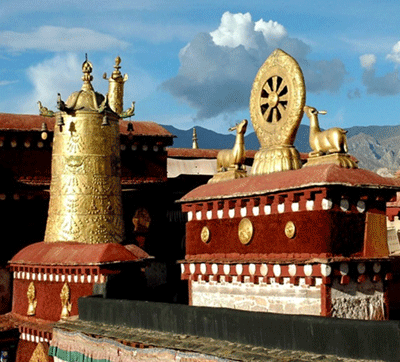
In Tibet, red and yellow are used exclusively for religious purposes. Only monasteries and living Buddha’s residences can be painted yellow, while common people’s houses are usually painted white.
Why do red and yellow enjoy such a special position in Tibet and what role do they play in the Tibet Buddhism? Living Buddha and architect Minyak Chokyi Gyaltsen told the whole story.
When yellow meets red, the joy of life is conveyed silently. In Western countries, the best expression can be found in Vincent Willem van Gogh’s Sunflowers. The sun, sunflowers and heart filled with love are the theme that van Gogh wanted to express to the world.
In the oriental world, however, the best example that combines the two colors is the Tibetan Buddhism, such as the Buddha statue’s august faces, on which red and yellow are apotheosized.
In Western art, red symbolizes vitality, blood and divine force. People often wear red ropes on their arms to block off devils.
While in the Tibetan Buddhism, red has its own language.
According to the primitive Bon religion on the Qinghai-Tibet Plateau, the universe was divided into three worlds for gods, human beings and ghosts, respectively.
Human beings painted red on their faces to avoid the invasion by ghosts. With the passage of the time and changes in beliefs, such red is no longer painted on people’s faces, but has been retained on architectures.
Nevertheless, the color has to be used in accordance with strict regulations, mainly for palaces and monasteries to show their holiness.
Even today, we can still see the red color on Tibet’s religious architectures. Take the Potala Palace for example. It consists of a red hall and white ones, with the former, the place for worshipping consecutive Dala Lamas, serving as the center of the palace.
Apart from these red architectures, there are some yellow walls adding radiance to the red ones. The yellow walls are usually found in the halls of some monasteries and nunneries.
The earliest documented yellow hall in the Tibetan Buddhism is the Buzi Golden Hall built during Trisong Detsen’s reign. Therefore, it can be seen that the close relationship between yellow and Tibetan Buddhism can be traced to ancient times.
Source: news.xinhuanet.com




